by Lorri | Jan 20, 2010 | UnCorked
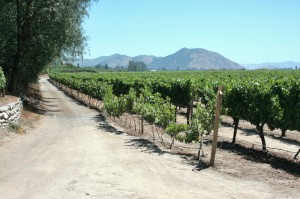 In the 1990s, the wine world’s mania for merlot created an enormous international demand. Chilean wineries, with their fruity-style wines, sold sizable amounts of this easy drinking varietal. One day, a viticulturist noticed an odd difference between the Chilean merlot vines and traditional merlot plantings — the leaves on the Chilean plantings did not look like other merlots. After a few tests, it was discovered that the Chilean plantings weren’t merlot at all. They were carmenere, a grape variety once planted alongside the most famous noble grapes of France’s Bordeaux vineyards, such as cabernet sauvignon and merlot.
In the 1990s, the wine world’s mania for merlot created an enormous international demand. Chilean wineries, with their fruity-style wines, sold sizable amounts of this easy drinking varietal. One day, a viticulturist noticed an odd difference between the Chilean merlot vines and traditional merlot plantings — the leaves on the Chilean plantings did not look like other merlots. After a few tests, it was discovered that the Chilean plantings weren’t merlot at all. They were carmenere, a grape variety once planted alongside the most famous noble grapes of France’s Bordeaux vineyards, such as cabernet sauvignon and merlot.
Chilean winemakers took this potentially scandalous event and turned it into a well-timed opportunity to introduce this unique grape to the world. With Chile’s ideal climate for this grape, and because producers pampered the fruit into a distinct style, Chilean wineries can now claim that its success was no accident.
Just as with the merlot grape for which it was mistaken, carmenere produces a highly approachable wine. With low tannin and low acid, the wine has a soft, fruity mouth feel compared with more tannic red wines. Consumers looking to discover wines outside of the better-known, more “fashionable” grapes, will find carmenere a treat.
THE VALUES
- 2007 Concha Y Toro Carmenere Frontera, Chile (about $9 retail)
- 2007 Root 1 Carmenere, Chile (about $14 retail)
- 2007 Ventisquero Carmenere, Chile (about $10 retail)
- 2007 Santa Rita Carmenere, Chile (about $13 retail)
THE SPLURGES
- 2007 Montes Alpha Carmenere, Chile (about $20 retail)
- 2007 Concha y Toro Marques de Casa Carmenere, Chile (about $22 retail)
- 2005 Concha y Toro Terrunyo Carmenere, Chile (about $48 retail)
by Lorri | Jan 18, 2010 | Lorri's Wine Diary
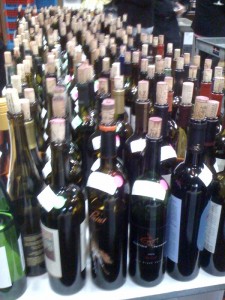 I am in California today judging for the Professional Wine Buyers Competition. We are finishing up, and I am eagerly awaiting the results.
I am in California today judging for the Professional Wine Buyers Competition. We are finishing up, and I am eagerly awaiting the results.
This competition is unique in that the wines are scored based on recommendation to consumers. The recommendations are scored on quality and (as I always preach) price! Will post results as soon as they are in my hand!
Lorri
by Lorri | Jan 16, 2010 | Tips
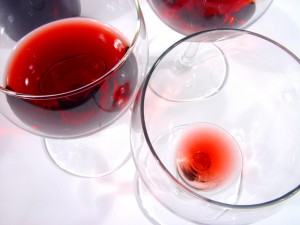 Here are a few tips to help you get the most out of a wine bar experience.
Here are a few tips to help you get the most out of a wine bar experience.
Take advantage of exploration: A wine bar will give you an opportunity to explore every hot spot in the world of wine. Don’t be afraid to try something new. Ordering by the glass, you can compare the ordinary, the safe and even the bizarre. When dining out, most of us do not order the same old chicken or steak on a restaurant menu. It’s the same with wine; step outside of Chardonnay and Merlot.
Be aware of storage conditions: If you see hundreds of bottles lining the serving area with out even a cork in them, you may not be getting the best sample of that wine because of the oxidation that occurs when it is exposed to air. Wine bars spend a lot of money on storage methods for keeping wines fresh, and the most reputable of these bars will have the most modern systems of preservation.
You can send it back: Don’t be afraid to send back a glass of wine that tastes oxidized or old. Just like a green apple that is left out in the air, wine loses some of its freshness if it is not preserved properly. Most wine bars will respect this request.
Order a taste, instead of a full glass: A taste is usually about a 1-ounce pour. This is a fun way to explore wine.
Order flights: One of the best advantages of a wine bar is being able to order several different wines. For example, you could ask for flight of Cabernet Sauvignons from four different growing regions, three from the top producers of Bordeaux, or a three unique or odd wines you have never tasted.
Enjoy!
by Lorri | Jan 13, 2010 | UnCorked
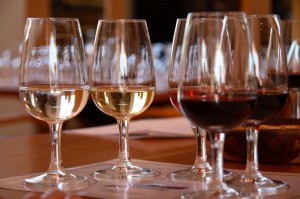 Starting a wine-tasting club is one of the most enjoyable and least intimidating ways to learn about wine. Tasting clubs are easy to create — simply find a few friends interested in wine and get together on a regular basis (usually once a month). Following are a few suggestions for starting a club.
Starting a wine-tasting club is one of the most enjoyable and least intimidating ways to learn about wine. Tasting clubs are easy to create — simply find a few friends interested in wine and get together on a regular basis (usually once a month). Following are a few suggestions for starting a club.
Choose friends with similar goals for the wine club. An ideal size is 8 to 10 people.
Each meeting should be built around a theme. In the beginning, it’s helpful to choose wines with something in common for comparison: for example, specific grape varieties, wine regions or styles. After the club gets going the ideas are limitless. Topics could include a grape variety grown in a warm climate versus a cold climate, wines under $15 or comparing 1-, 5-, 10- and 20-year-old wines.
For setup, you will need a wine glass for each wine being tasted, a dump bucket for discarding wine before the next pour or spitting out, pen and paper for notes and a pitcher of water, plain bread or crackers to clean your palate between wines. To better observe the color of wines use a white tablecloth for a background, and if possible, set up at a large table in a room with good lighting.
For each tasting, pour each guest 2 to 3 ounces. Taste white wines before red and dry whites before sweet, and reds from light to full-bodied. Discussing the wine is the key in building your wine vocabulary, knowledge and confidence. Take notes on color, aromas and flavors, finding similarities and differences in the wines. Above all, have fun and enjoy!
For more ideas, check out:
- Ultimate Wine Tasting Kit by Wine Spectator includes Harvey Steiman’s Essentials of Wine, Wine Spectator’s Pocket Guide to Wine, Quick Guide to Wine Tasting, bottle bags, tasting checklists, stemware tags, corkscrew.
- The Wine Tasting Party Kit: Everything You Need to Host a Fun and Easy Wine Tasting Party by St. Pierre includes wine bottle covers, tasting score pads, a cheat sheet, glass markers, and a 64-page illustrated book.
- The Wine Club: A Month by-Month Guide to Learning About Wine With Friends by Maureen Christian Petrosky.
- The Wine Enthusiast Essential Wine Tasting Kit includes Wine Enthusiast Magazine Pocket Guide to Wine plus 2006 Vintage Chart, two tasting checklist notepads, six bottle bags, six bottle stoppers, 24 bottle tags, a blank wine journal and two wine label removers.
- Winerd, wine trivia and tasting game.
by Lorri | Jan 8, 2010 | Tips
 When it comes to pairing wines and chocolates, remember that lighter, more elegant chocolates generally should be tasted with lighter-bodied wines. If the wine is more full-bodied, the chocolate should be stronger, darker and more robust. For example, a delicate Moscato d’Asti could compete perfectly with the mellow butter flavors in many white chocolates.
When it comes to pairing wines and chocolates, remember that lighter, more elegant chocolates generally should be tasted with lighter-bodied wines. If the wine is more full-bodied, the chocolate should be stronger, darker and more robust. For example, a delicate Moscato d’Asti could compete perfectly with the mellow butter flavors in many white chocolates.
The wine should be at least as sweet, or possibly sweeter, than the chocolate served with it. Many times when the wine and chocolate are not compatible, a slight sour note develops on the palate.
Framboise, with its raspberry flavor, works beautifully with white or milk chocolates.
Cabernet sauvignon is another great match for chocolate, because it also has the aromatic hints of dark berry, spice and even chocolate.
A combination of chocolate with red wines that are overoaked or start as extremely dry wines, such as Spanish Riojas, will likely take any sweetness from the chocolate and fruitiness from the wines, leaving a taste similar to a dust bowl. Try a robust, full-bodied California Zinfandel or an Australian Shiraz for exceptional pairings.
Any Port or dessert wine is considered the traditional “safe bet” with almost any type of chocolate, but remember, unlike many other foods, such as cheese and hearty meat dishes, there really are no “safe bets” with chocolate.
For the best results in your pairing exploration, stay with fine wines and high-quality chocolates. Chocolate shaped like a bunny and wine that costs less than $5 a bottle are not the most ideal matches for this challenge of the senses.
by Lorri | Jan 6, 2010 | UnCorked
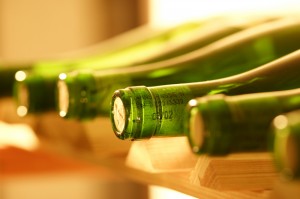 The new year is a prime time for wine collectors to organize, plan, purge and simply freshen up the wine cellar. It is also the ideal time for taking stock of your collection. Here are a few cellar housekeeping tips.
The new year is a prime time for wine collectors to organize, plan, purge and simply freshen up the wine cellar. It is also the ideal time for taking stock of your collection. Here are a few cellar housekeeping tips.
Most wines should be consumed within one to two years. If you receive a bottle of wine as a gift, unless you know or were told it would age, open and enjoy it in the next six months. Don’t let a wine deteriorate in your collection because you assumed a fancy label or unfamiliar brand implied cellar storage.
Wine tags (paper labels that look similar to “do not disturb” hotel room door tags that slip over the neck of the bottle) are a convenient tool for organizing your cellar. For avid collectors these tags can be used to identify vintages and rare single bottles without movement in your cellar and for everyday cellar management the tags can be used as reminders of when to open, or even note if the bottle was a gift or purchased for a specific occasion.
Wine tags are also a great way to leave instructions for others who may be choosing wine from your collection with notes such as “Everyday Wine for Dinner,” “Ask Me First,” “Don’t Touch” or “Sacred.”
Whether you are a beginning collector or one who proudly boasts a cellar filled with treasures it is a good idea to keep an organized inventory. Remember, simplicity is key. A computer program is a good way to keep track of wines in your cellar, but you can do the same job with handwritten bottle tags or even the uncomplicated pad and pencil.
Cellaring is not only for long-term aging; consider adding everyday wines in your cellar space to retain their quality.
THE VALUES
- 2006 Stephen Vincent Crimson Red, California (about $16, retail)
- 2007 Hogue Cabernet Sauvignon, Washington (about $15 retail)
- 2008 Montinore Estate Pinot Gris, Oregon (about $17 retail)
- 2006 Murphy-Goode Liar’s Dice Zinfandel, California (about $17 retail)
- 2007 Cellar No. 8 Merlot, California (about $10 retail)
- 2007 Arido Malbec, Argentina (about $10 retail)
- 2007 Santi Pinot Grigio, Italy (about $16 retail)
Wines intended to age will change over time; some will mellow and others will evolve into perfection. The following are possible additions to your cellar created for aging.
THE SPLURGES
- 2006 Don Melchor Cabernet Sauvignon, Chile (about $110 retail)
- 2007 Honig Cabernet Sauvignon, California (about $54 retail)
- 2006 Kistler Vineyards Hyde Vineyard Chardonnay, California (about $99 retail)
- 2006 E. Guigal Chateauneuf du Pape, France (about $82 retail)
 In the 1990s, the wine world’s mania for merlot created an enormous international demand. Chilean wineries, with their fruity-style wines, sold sizable amounts of this easy drinking varietal. One day, a viticulturist noticed an odd difference between the Chilean merlot vines and traditional merlot plantings — the leaves on the Chilean plantings did not look like other merlots. After a few tests, it was discovered that the Chilean plantings weren’t merlot at all. They were carmenere, a grape variety once planted alongside the most famous noble grapes of France’s Bordeaux vineyards, such as cabernet sauvignon and merlot.
In the 1990s, the wine world’s mania for merlot created an enormous international demand. Chilean wineries, with their fruity-style wines, sold sizable amounts of this easy drinking varietal. One day, a viticulturist noticed an odd difference between the Chilean merlot vines and traditional merlot plantings — the leaves on the Chilean plantings did not look like other merlots. After a few tests, it was discovered that the Chilean plantings weren’t merlot at all. They were carmenere, a grape variety once planted alongside the most famous noble grapes of France’s Bordeaux vineyards, such as cabernet sauvignon and merlot.



